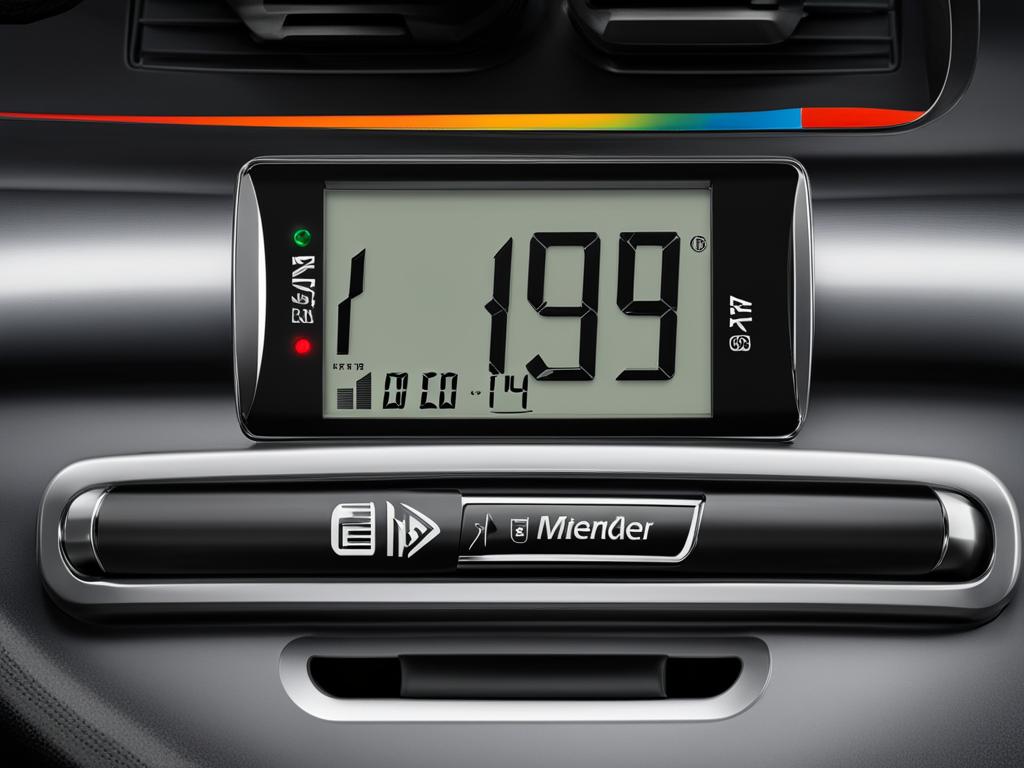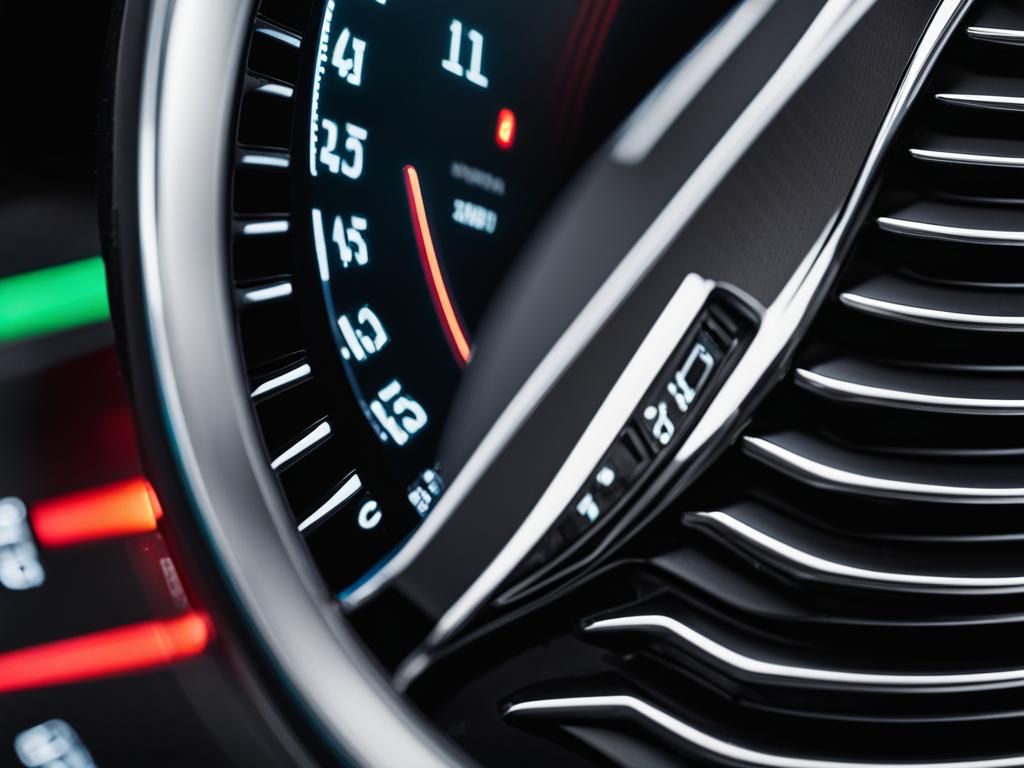Mercedes C300 Tire Pressure Guide & Tips
Proper tire pressure is crucial for maintaining the performance, safety, and longevity of your Mercedes-Benz C300. In this guide, we’ll provide you with the recommended tire pressure specifications for your C300, explain how to check the tire pressure, and offer tips on maintaining optimal tire pressure for different driving conditions.
Key Takeaways:
- The recommended tire pressure for a Mercedes-Benz C300 is 36 PSI for both front and rear tires in vehicles with a single driver.
- In vehicles with a heavier load or extra passengers, the recommended tire pressure is 39 PSI in the front tires and 46 PSI in the rear tires.
- Check your tire pressure regularly using the vehicle’s instrument cluster or a tire pressure gauge.
- Adhere to the recommended tire pressure specifications to ensure optimal performance, fuel efficiency, and tire longevity.
- Adjust the tire pressure when using winter tires for better traction and handling in cold and snowy conditions.
Checking Mercedes C300 Tire Pressure
Proper tire pressure is essential for the performance and safety of your Mercedes-Benz C300. In this section, we will guide you on how to check your tire pressure using different methods.
Using the Tire Pressure Monitoring System (TPMS)
The Mercedes C300 is equipped with a Tire Pressure Monitoring System (TPMS) that allows you to easily check your tire pressure through your vehicle’s instrument cluster.
- Navigate to the “service” menu on your driver’s display.
- Select the option for tire pressure.
- A digital diagram of your vehicle will appear, displaying the tire pressure levels for each wheel.
- If the pressure is low in one of your tires, the display will indicate which tire needs air.
This system provides a convenient way to monitor your tire pressure effortlessly. However, it’s always a good idea to manually check your tire pressure to ensure accuracy.
Manual Tire Pressure Check
To manually check your Mercedes C300 tire pressure, you will need a tire pressure gauge:
- Remove the valve stem cap from each tire.
- Push the tire pressure gauge onto the valve stem until you hear a hiss of air.
- Read the pressure displayed on the gauge.
- If the pressure is below the recommended level, inflate the tire. If it’s above the recommended level, deflate the tire.
Remember to check the tire pressure for all four tires, including the spare tire if you have one.
Recommended Tire Pressure
The recommended tire pressure for your Mercedes C300 can be found in your owner’s manual or on a sticker located on the driver’s side door jamb. It is important to adhere to these specifications to ensure optimal performance and safety.
| Tire Position | Recommended Pressure (PSI) |
|---|---|
| Front Tires | 36 PSI (under normal conditions) |
| Rear Tires | 36 PSI (under normal conditions) |
| Front Tires | 39 PSI (with heavier load or extra passengers) |
| Rear Tires | 46 PSI (with heavier load or extra passengers) |
Properly inflated tires provide better handling, improved fuel efficiency, and increased tire longevity.
Recommended Mercedes C300 Tire Pressure Specifications
The recommended tire pressure for a Mercedes-Benz C300 typically falls between 38 psi and 47 psi. It’s important to adhere to these specifications for optimal performance, fuel efficiency, and tire longevity in your Mercedes C300.
Front and Rear Tire Pressure
The specific tire pressure for your vehicle can be found in your owner’s manual or on a sticker attached to the driver’s side door jamb. Rear tires generally require slightly more pressure than the front tires.
Proper tire pressure ensures:
- Optimal handling and traction
- Improved fuel efficiency
- Even tire wear
- Enhanced safety
By following the recommended tire pressure specifications, you can enjoy a smoother and safer driving experience in your Mercedes C300.

Quote:
“Maintaining the proper tire pressure for your vehicle is crucial for optimal performance and safety.” – Mercedes-Benz
Winter Tire Pressure for Mercedes C300
When it comes to using winter tires on your Mercedes-Benz C300, adjusting the tire pressure is crucial. Winter conditions require different tire pressures compared to standard driving conditions. By following the recommended winter tire pressure, you can enhance the safety and performance of your vehicle.
Consulting your owner’s manual or the guidelines provided by the tire manufacturer is essential to determine the specific winter tire pressure for your Mercedes C300. These sources will provide the most accurate and up-to-date information regarding the recommended tire pressure.
Properly inflated winter tires offer better traction and handling on snowy and icy roads. The right tire pressure ensures that the treads of your winter tires make optimal contact with the road surface, helping to prevent skidding and improving overall control.
Remember, winter tire pressure should be adjusted according to the manufacturer’s recommendations. Incorrect tire pressure can affect the tire’s performance and compromise your safety on wintry roads. Proper winter tire pressure maintains the tire’s ability to grip the road, providing peace of mind and confident driving in challenging weather conditions.
| Recommended Winter Tire Pressure for Mercedes C300 | |
|---|---|
| Front Tires | Rear Tires |
| _______ PSI (Consult owner’s manual) | _______ PSI (Consult owner’s manual) |
Maintaining Proper Mercedes C300 Tire Pressure
To ensure your Mercedes-Benz C300 performs optimally and keeps you safe on the road, it’s crucial to maintain the proper tire pressure. Regularly checking and adjusting the tire pressure will not only enhance your driving experience but also contribute to fuel efficiency, even tire wear, and overall safety.
Why is Tire Pressure Important?
Properly inflated tires are essential for several reasons:
- Optimal Performance: Keeping your tires at the recommended pressure helps maintain proper handling, traction, and braking performance.
- Fuel Efficiency: Underinflated tires can increase rolling resistance, causing your vehicle to consume more fuel.
- Tire Longevity: Incorrect tire pressure can lead to uneven wear, reducing the lifespan of your tires and requiring premature replacement.
- Safety: Adequate tire pressure ensures better control of your vehicle, especially during emergency maneuvers or adverse weather conditions.
The Role of the TPMS
The Tire Pressure Monitoring System (TPMS) in your Mercedes C300 constantly monitors the tire pressure and alerts you if it falls below the recommended level. This feature is invaluable in maintaining your tire pressure effortlessly. If you receive a TPMS warning, it’s essential to check and adjust the tire pressure as soon as possible using the methods below.
Methods to Check Tire Pressure
You can check your tire pressure using two primary methods:
- Using the TPMS: Access the TPMS menu on your vehicle’s instrument cluster to view the current tire pressure levels. If any tire’s pressure is below the recommended level, the TPMS will indicate which tire(s) need(s) attention. Refer to your vehicle’s manual for specific instructions on accessing the TPMS menu.
- Using a Tire Pressure Gauge: If you prefer a manual approach or don’t have access to the TPMS display, you can use a tire pressure gauge. Follow these steps:
- Remove the valve stem cap from each tire.
- Press the tire pressure gauge onto the valve stem firmly.
- Read the pressure displayed on the gauge.
- Compare the reading to the recommended tire pressure for your Mercedes C300.
- Inflate or deflate the tires as needed to achieve the proper pressure.
When to Check Tire Pressure
It is recommended to check your tire pressure regularly, especially in the following situations:
- Before Long Road Trips: Ensuring proper tire pressure before embarking on a long journey is crucial for a smooth and safe ride.
- When Suspecting Tire Issues: If you notice any abnormal tire behavior or suspect a puncture or leak, it’s essential to check the tire pressure promptly.
Taking these proactive steps will help maintain the right tire pressure and promote a comfortable and safe driving experience in your Mercedes C300.

Conclusion
Maintaining the proper tire pressure for your Mercedes-Benz C300 is crucial for achieving peak performance, maximizing fuel efficiency, and ensuring optimal safety on the road. By following the recommended tire pressure specifications provided by the manufacturer, you can enhance your vehicle’s handling and traction capabilities.
Regularly monitoring your tire pressure using the TPMS (Tire Pressure Monitoring System) or a tire pressure gauge is essential in keeping your tires properly inflated. This will help you avoid potential issues that can arise from underinflation or overinflation, such as decreased fuel economy, uneven tire wear, and compromised handling.
By prioritizing the care of your tire pressure, you can enjoy a luxurious and safe driving experience in your Mercedes C300. Remember to consult your owner’s manual or the sticker on your driver’s side door jamb for the recommended tire pressure specifications that are specific to your vehicle. Stay proactive in maintaining your tire pressure and ensure optimal performance and safety every time you hit the road.
FAQ
What is the recommended tire pressure for a Mercedes-Benz C300?
The recommended tire pressure for a Mercedes-Benz C300 is 36 psi for both front and rear tires in vehicles with a single driver. In vehicles with a heavier load or extra passengers, the recommended tire pressure is 39 psi in the front tires and 46 psi in the rear tires.
How can I check the tire pressure of my Mercedes-Benz C300?
You can check your Mercedes-Benz C300 tire pressure using your vehicle’s instrument cluster. Navigate to the “service” menu on your driver’s display and select the option for tire pressure. A digital diagram of your vehicle will appear, showing the tire pressure levels for each wheel. Alternatively, you can manually check the tire pressure using a tire pressure gauge by removing the valve stem cap on each tire and pushing the gauge onto the valve stem to get a reading.
What is the optimal tire pressure for a Mercedes-Benz C300?
The recommended tire pressure for a Mercedes-Benz C300 typically falls between 38 psi and 47 psi. The specific tire pressure for your vehicle can be found in your owner’s manual or on a sticker attached to the driver’s side door jamb. Rear tires generally require slightly more pressure than the front tires.
What tire pressure should I use for my Mercedes C300 in winter?
When using winter tires on your Mercedes-Benz C300, it’s important to adjust the tire pressure accordingly. The recommended winter tire pressure may differ from the standard tire pressure. Consult your owner’s manual or the tire manufacturer’s guidelines for the specific winter tire pressure for your Mercedes C300.
How do I maintain proper tire pressure for my Mercedes-Benz C300?
To maintain proper tire pressure for your Mercedes-Benz C300, it’s important to regularly check the tire pressure and adjust it as needed. The TPMS (Tire Pressure Monitoring System) in your vehicle constantly monitors the tire pressure and alerts you if it falls below the recommended level. Additionally, it’s crucial to check the tire pressure before long road trips and when you suspect any issues with your tires.
Why is maintaining the proper tire pressure important for my Mercedes-Benz C300?
Maintaining the proper tire pressure for your Mercedes-Benz C300 is essential for peak performance, fuel efficiency, and safety. Adhering to the recommended tire pressure specifications ensures optimal handling and traction. Properly inflated tires also contribute to fuel efficiency, even tire wear, and overall safety.




